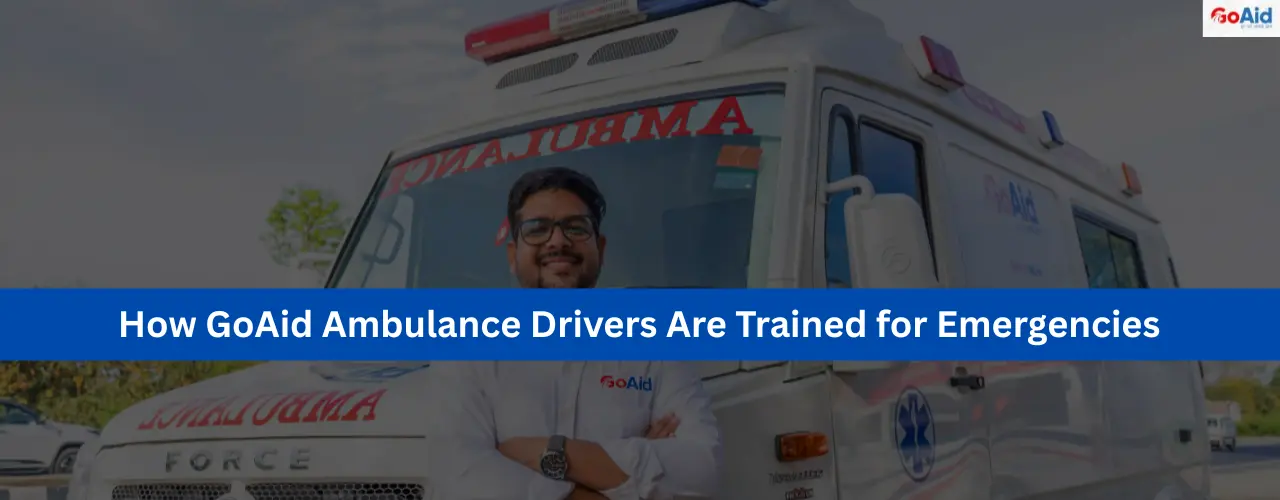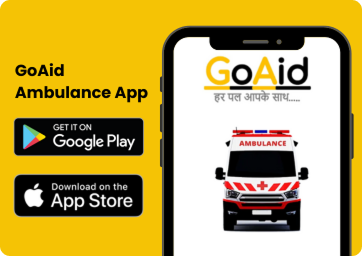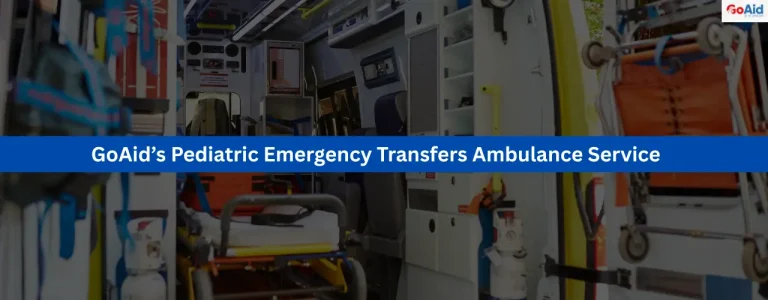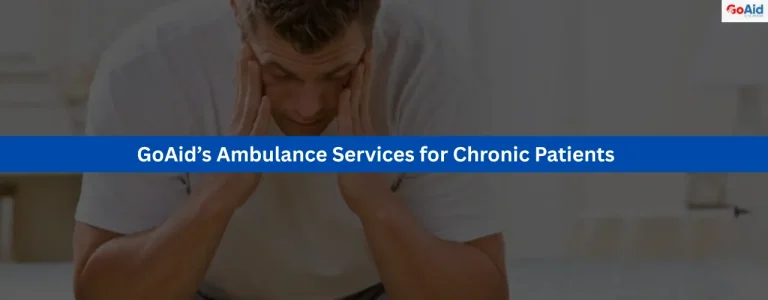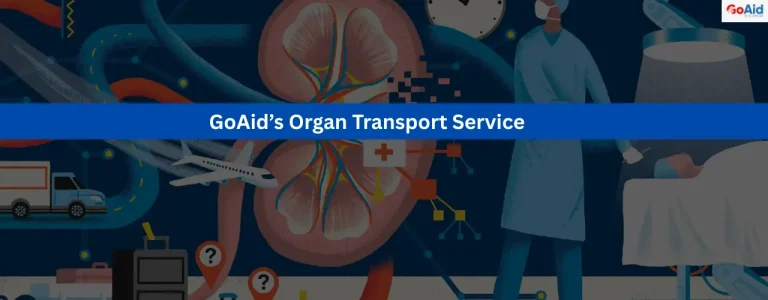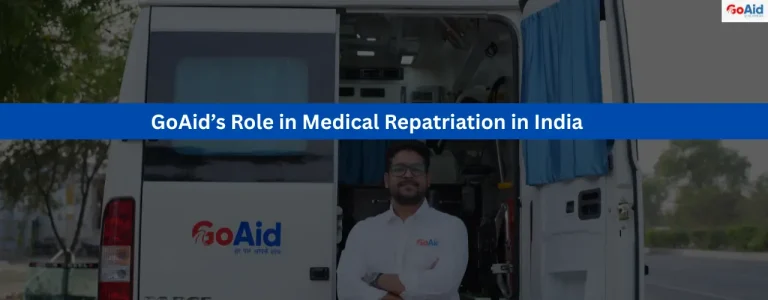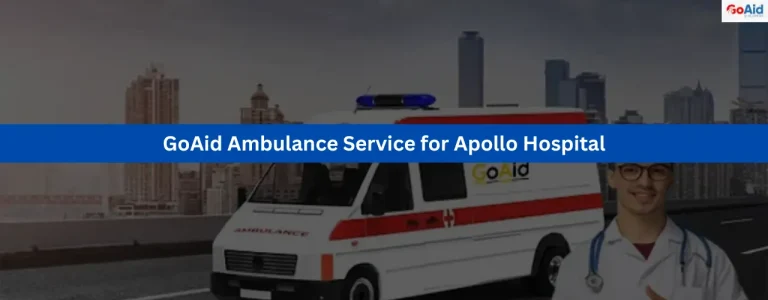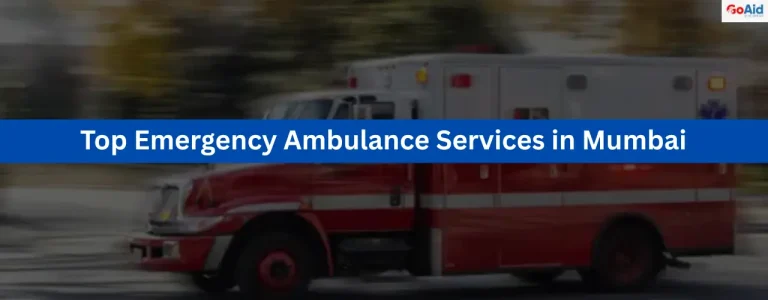In India, medical emergencies happen every day, and responding to them quickly and correctly requires more than just driving skills. ThatŌĆÖs why ambulance drivers and paramedics need proper training to handle critical situations. GoAid has taken this need seriously and has built a strong training system for its emergency response teams.
In this blog, weŌĆÖve shared all the details about why ambulance driver training is important, what kind of training is given, and how GoAid ensures its team is ready for any crisis. Curious to know how GoAid trains its drivers and paramedics? Then read this blog to the end.
So, letŌĆÖs startŌĆö
Why Ambulance Drivers Need Training?
Ambulance drivers are more than just drivers, they are the frontline responders in medical emergencies. Proper training is essential because driving an ambulance requires navigating through heavy traffic swiftly and safely while ensuring the patientŌĆÖs comfort and stability. Trained drivers understand emergency protocols, enabling them to prioritize patient care during transit.┬Ā
They must communicate effectively with paramedics, hospitals, and dispatch centers to coordinate timely medical assistance. Without adequate training, drivers may cause delays or worsen patient conditions due to rough driving or poor decision-making.
GoAid Ambulance emphasizes specialized training to equip drivers with skills like defensive driving, emergency vehicle operation, basic first aid, and crisis management. This ensures not only faster ambulance response times but also safer, more efficient patient transport. Ultimately, training transforms drivers into vital healthcare partners who help save lives and support paramedics during critical moments.
What Kind of Training Does an Ambulance Driver Need?
Ambulance drivers must receive specialized training to handle emergencies effectively. This training improves driving skills, patient safety, communication, and coordination with medical teams during urgent situations.
1. Defensive Driving
Ambulance drivers learn defensive driving techniques to safely maneuver through heavy traffic, unpredictable road conditions, and emergencies. This training helps reduce accident risks, maintain patient safety, and ensures timely arrival at the emergency site, even under challenging traffic circumstances.
2. Emergency Vehicle Operation
Training covers the proper use of sirens, flashing lights, and emergency vehicle controls. Drivers are taught to handle these features responsibly to alert other road users, gain the right of way, and navigate quickly through crowded or congested city streets during urgent medical calls.
3. Basic First Aid
Ambulance drivers receive instruction in essential first aid skills, enabling them to provide immediate care if paramedics are delayed. This includes managing wounds, performing CPR, and stabilizing patients until advanced medical help arrives, thus improving patient survival chances during transit.
4. Communication Skills
Clear and effective communication with paramedics, dispatchers, and hospital staff is critical. Training emphasizes concise information exchange, accurate reporting of patient status, and coordination to streamline ambulance dispatch and hospital preparation, which enhances emergency response efficiency.
5. Stress Management
Emergency driving involves high-pressure situations requiring calmness and focus. Drivers learn stress management techniques to maintain composure, make rational decisions quickly, and handle the emotional toll of emergencies. With it, we ensure patient safety and smooth ambulance operations even during chaotic scenarios.
6. Route Planning
Drivers are trained in efficient route planning using GPS technology and real-time traffic updates. This skill helps them select the fastest, safest paths to emergencies, reducing response times and improving patient outcomes by avoiding traffic jams, roadblocks, or other delays.
7. Patient Handling Awareness
Ambulance drivers learn to be mindful of patientsŌĆÖ conditions during transport. Proper handling reduces discomfort, prevents further injury, and supports paramedics by ensuring smooth vehicle movement, stable patient positioning, and quick adjustments during transit for enhanced patient care and safety.
How GoAid Ambulance Drivers Are Trained for Emergencies?
GoAid Ambulance drivers receive focused training to handle emergencies efficiently, combining advanced driving, patient care, communication, and coordination skills to ensure swift and safe emergency response every time.
1. Defensive Driving
Drivers learn safe, cautious driving to avoid accidents while swiftly navigating through busy city traffic during emergencies. With it, we ensure patient safety and timely arrival at medical facilities without delays or risks.
2. Emergency Vehicle Operation
Training includes proper use of sirens, flashing lights, and vehicle controls to alert other drivers, secure the right of way, and move safely and quickly through crowded or congested roads.
3. Basic First Aid
Drivers gain essential first aid skills like CPR and wound care to provide immediate help if paramedics are delayed, stabilizing patients and improving survival chances during transit.
4. Communication Skills
Clear, concise communication with paramedics, dispatchers, and hospitals is taught to coordinate emergency responses, update patient conditions, and prepare hospitals for timely treatment.
5. Stress Management
Drivers learn techniques to maintain calm and focus under pressure. This makes quick, rational decisions in high-stress emergencies to ensure patient safety and smooth ambulance operations.
6. Route Planning
Training involves using GPS and traffic apps to plan the fastest and safest routes, avoiding congestion or obstacles, reducing ambulance response times and improving patient outcomes.
7. Patient Handling Awareness
Drivers are trained to minimize patient discomfort by driving smoothly and understanding the needs of different patients, preventing further injury during transport to healthcare facilities.
8. Vehicle Maintenance Knowledge
Basic ambulance maintenance training ensures drivers regularly check vehicle health, addressing minor issues promptly to avoid breakdowns and keep the ambulance ready for emergencies at all times.
9. Emergency Protocols
Drivers learn standardized procedures for various emergencies, including accident response, critical patient transport, and infection control, to maintain safety and professionalism during all medical calls.
10. Team Coordination
Training emphasizes teamwork with paramedics and hospital staff. With it, we ensure smooth handoffs, clear communication, and unified efforts to provide the best possible emergency care.
How GoAid Trains Its Paramedics to Handle a Crisis?
GoAid paramedics undergo thorough training to manage emergencies with clinical expertise, quick decision-making, clear communication, and emotional resilience. With it, we ensure they deliver the best possible care during critical situations.
1. Advanced Medical Training
Paramedics learn vital emergency procedures such as IV insertion, airway management, and medication use to stabilize critically ill or injured patients effectively during transport to medical facilities.
2. Trauma Care
Training equips paramedics to assess and treat trauma cases rapidly, focusing on wound care, fracture management, and preventing complications from injuries sustained in accidents or violent incidents.
3. CPR and Life Support
Paramedics master cardiopulmonary resuscitation and advanced life support techniques, enabling them to sustain patient breathing and circulation during life-threatening emergencies before hospital intervention.
4. Emergency Assessment
Paramedics develop skills to quickly assess patientsŌĆÖ medical conditions, identify life-threatening issues, and prioritize care. With it, we ensure that treatment is efficient and appropriate in time-sensitive emergencies.
5. Communication Skills
Training emphasizes clear communication with patients, families, and medical teams, improving coordination, reducing errors, and ensuring smooth information flow during patient transfer and hospital handover.
6. Stress and Emotional Management
Paramedics learn coping techniques to remain calm and focused during high-pressure crises, enabling them to make sound decisions and provide compassionate care despite stressful circumstances.
7. Use of Medical Equipment
Paramedics receive hands-on training on operating medical devices like monitors, defibrillators, and oxygen systems. With it, we ensure proper use and maintenance during patient care and transportation.
8. Infection Control
Strict protocols on hygiene, sanitization, and protective gear use are taught to prevent cross-contamination and protect both patients and paramedics from infections.
9. Teamwork and Coordination
Training fosters collaboration with ambulance drivers, hospital staff, and emergency responders. With it, we ensure a unified approach to patient care and swift, organized handling of emergencies.
10. Scenario-Based Drills
Paramedics participate in realistic emergency simulations to practice critical skills, improve decision-making under pressure, and enhance their readiness for real-life crisis situations.
Conclusion to the GoAid Ambulance Driver Training
In conclusion, GoAid Ambulance driver training is a comprehensive program designed to equip drivers with essential skills for safe, efficient, and compassionate emergency response. From defensive driving and emergency vehicle operation to communication and stress management, every aspect is covered to ensure drivers perform flawlessly under pressure.┬Ā
This training helps reduce response times and improve patient safety during transport. GoAidŌĆÖs focus on continuous learning and practical drills ensures its drivers remain prepared for all types of emergencies. If you have any questions or want to know more about the training process, feel free to ask in the comment box below.
FAQs related to the GoAid Ambulance Driver Training
Question 1: What skills are taught in GoAid Ambulance driver training?
Answer: GoAid trains drivers in defensive driving, emergency vehicle operation, basic first aid, communication, stress management, route planning, patient handling, vehicle maintenance, emergency protocols, and team coordination for effective emergency response.
Question 2: How long is the GoAid Ambulance driver training program?
Answer: The training duration varies but typically lasts several weeks, combining classroom learning and practical sessions to ensure drivers master all necessary emergency response skills before deployment.
Question 3: Does GoAid provide first aid training to ambulance drivers?
Answer: Yes, all GoAid ambulance drivers receive essential first aid training, including CPR and wound care, to provide immediate assistance before paramedics take over.
Question 4: Are GoAid drivers trained to handle stressful situations?
Answer: Absolutely. GoAidŌĆÖs training includes stress management techniques that help drivers stay calm, focused, and make rational decisions during high-pressure emergencies.
Question 5: How does GoAid ensure drivers know the fastest routes?
Answer: Drivers are trained to use GPS and traffic management apps for efficient route planning to avoid delays and ensure quick patient transport.
Question 6: Do GoAid drivers learn patient handling skills?
Answer: Yes, drivers are taught to drive smoothly and handle patients carefully to minimize discomfort and avoid further injury during transport.
Question 7: Is vehicle maintenance part of the training?
Answer: Yes, drivers learn basic ambulance maintenance to keep vehicles in top condition and avoid breakdowns during emergencies.
Question 8: How does GoAid train drivers for emergency protocols?
Answer: Drivers receive detailed instructions on emergency procedures, including accident response, infection control, and patient safety, to maintain professionalism and efficiency.
Question 9: Does GoAid train drivers to coordinate with medical teams?
Answer: Yes, teamwork and communication with paramedics, dispatchers, and hospital staff are key training components to ensure seamless emergency care.
Question 10: Are practical drills part of the training?
Answer: Yes, regular scenario-based drills simulate real emergencies, enhancing driversŌĆÖ skills, confidence, and readiness for actual crisis situations.

